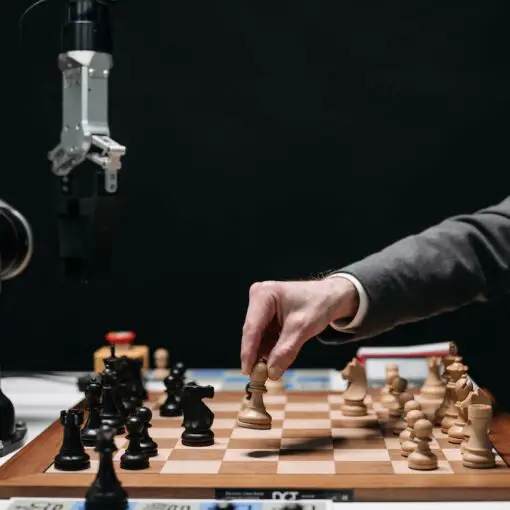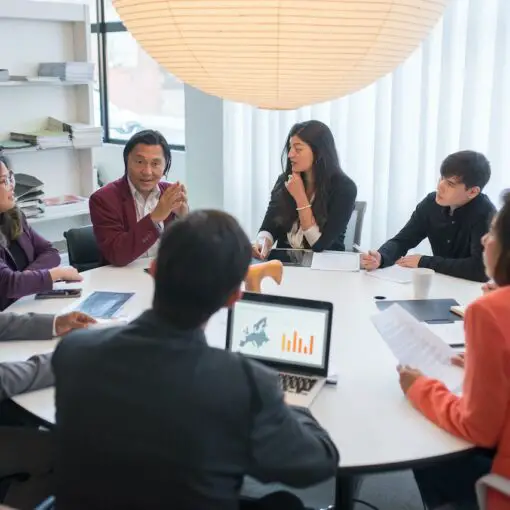In today’s competitive business landscape, developing a strategic mindset is crucial for individuals seeking to advance in their careers and make an impact within their organizations. Possessing a strategic mindset allows professionals to approach challenges holistically, better anticipate and adapt to change, and identify opportunities for growth. By cultivating this essential skill, professionals can position themselves as valuable contributors and innovators, helping their organizations navigate the complexities of an ever-evolving market landscape.
The journey to developing a strategic mindset involves purposeful practice and a commitment to continuous learning. One effective method for honing these skills is by asking more strategic questions, which can enhance their planning abilities and sharpen their focus on spotting new opportunities. Other essential elements of cultivating a strategic mindset include embracing curiosity, gaining exposure to strategic roles, and challenging one’s own assumptions by exploring multiple perspectives.
While there is no one-size-fits-all approach to developing a strategic mindset, integrating these techniques into everyday routines can help professionals refine their strategic thinking capabilities, paving the way for career success and organizational growth.
Developing a Strategic Mindset
Perspective and Vision
A strong strategic mindset starts with an individual’s ability to perceive the larger picture and create a vision for the future. This requires understanding past experiences and present situations, analyzing trends, and identifying opportunities. The development of a clear vision enables strategic thinkers to align their team and resources towards achieving the desired outcomes. An individual with a strategic mindset is able to recognize patterns, anticipate potential challenges, and proactively address them.
Embrace Challenges
Individuals with a strategic mindset are not afraid to encounter obstacles or tough questions. Instead, they view these challenges as opportunities to learn and grow. They are often curious and open-minded, encouraging others to do the same. By embracing challenges, strategic thinkers can foster a culture of continuous improvement and innovation within their organization.
Long-Term vs. Short-Term
Strategic thinking takes into account both short-term goals and long-term objectives. A strategic mindset is required to balance the need for immediate results with the desire to create lasting value. This involves prioritizing, adapting, and making informed decisions based on the available resources, time constraints, and other factors. By considering both short and long-term perspectives, strategic thinkers can ensure that their actions lead to sustainable success.
Critical Thinking and Problem Solving
Critical thinking is a vital component of a strategic mindset. Individuals who possess this skill are able to analyze and evaluate information to make informed decisions that align with their overall vision. They are also adept at problem-solving, using logic and creativity to identify potential solutions and assess their feasibility. Developing these skills can be accomplished through practice, continuous learning, and fostering a culture of open dialogue and feedback within an organization.
In conclusion, cultivating a strategic mindset is essential for individuals and organizations to succeed in today’s competitive landscape. By focusing on developing a clear vision, embracing challenges, balancing short-term and long-term objectives, and honing critical thinking and problem-solving skills, strategic thinkers can effectively drive positive change and achieve lasting success.
Key Components of Strategic Thinking
Understanding Industry Context
To develop a strategic mindset, a vital starting point is to gain a deep understanding of the industry context in which your business operates. Thoroughly analyzing the landscape helps uncover critical trends, changes, and external factors that may affect your organization’s success. By regularly evaluating the industry context and staying up to date with related news, you’ll be better prepared to make informed decisions and adapt strategic plans.
Identifying Business Drivers
Another essential aspect of strategic thinking involves identifying the key business drivers for your organization. Business drivers are the critical factors that contribute to growth, competitiveness, and overall success. These may include customer demands, operational efficiency, or market dynamics. Make an effort to:
- Regularly review and prioritize drivers
- Assess how they impact your business
- Align your strategies with these drivers
Growth and Innovation
A central component of strategic thinking is focused on growth and innovation. Exploring new opportunities, developing unique solutions, and staying ahead of the competition are crucial factors for long-term success. As a strategic thinker, you should:
- Foster a culture of curiosity and experimentation
- Encourage collaboration and idea generation
- Develop a robust process for testing and implementing new initiatives
Recognizing Potential Obstacles
Strategic thinkers are also adept at foreseeing potential obstacles and addressing them proactively. By recognizing potential obstacles, you can develop contingency plans and minimize the negative impact on your organization. Key steps to take include:
- Identifying risks and vulnerabilities
- Developing mitigation strategies and backup plans
- Monitoring performance and continuously revising plans as needed
By incorporating these key components into your thought process, you can cultivate a strategic mindset that is essential for success in today’s business environment.
Harnessing Communication and Leadership
Effective Communication
Effective communication is vital to developing a strategic mindset. It involves articulating thoughts and ideas clearly, listening actively, and engaging in conversations that foster understanding and collaboration. This process helps individuals tap into the collective intelligence of a team and craft better strategies. Techniques to enhance communication skills include:
- Active listening: Demonstrating genuine interest in what others are saying and asking clarifying questions.
- Clear expression: Using concise and easily understood language to convey thoughts and ideas.
- Empathy: Putting oneself in another’s shoes to understand their perspective and adapt communication accordingly.
Strategic Leadership
Strategic leadership goes beyond day-to-day management and focuses on shaping an organization’s long-term direction. It involves setting clear goals, identifying opportunities and threats, and aligning resources to achieve desired outcomes. Developing strategic leadership abilities includes:
- Adopting a promotion mindset, focused on wins and gains, rather than avoiding losses.
- Leveraging critical questioning to explore assumptions, test hypotheses, and drive innovation.
- Encouraging a culture of continuous learning, where employees feel empowered to take risks and develop new skills.
Synthesizing Information and Solutions
To foster a strategic mindset, it’s essential to synthesize various data points, perspectives, and ideas to generate innovative solutions. This process enables individuals to see connections, anticipate consequences, and make informed decisions. Approaches to enhance synthesis abilities include:
- Diversifying sources of information to gain a well-rounded understanding of an issue.
- Experimenting with different problem-solving techniques, like scenario planning or design thinking.
- Collaborating with cross-functional teams to tap into diverse expertise and drive creative ideation.
By mastering effective communication, strategic leadership, and synthesis skills, individuals can develop a strategic mindset that empowers them to navigate complex issues with confidence and clarity. This mindset paves the way for informed decision-making, adaptive strategies, and long-term success.
Applying Strategic Thinking in Business
Strategic Planning
Strategic planning is a crucial process that involves setting long-term goals and designing a roadmap for achieving them. It requires understanding the company’s unique competitive advantages and potential weaknesses. Developing a strategic mindset involves asking more strategic questions to exercise planning skills, spot opportunities, and gain insight into the industry.
Operational vs. Tactical Decisions
In the quest for a more strategic mindset, it is essential to differentiate between operational and tactical decisions. Operational decisions focus on the day-to-day management of a company’s resources, while tactical decisions involve short-term problem-solving and planning. Strategic thinking skills, on the other hand, are essential for making long-term, high-level decisions that align with the company’s goals and objectives.
- Operational Decisions: Daily operations, resource allocation, and process management
- Tactical Decisions: Short-term planning, problem-solving, and contingency planning
- Strategic Decisions: Long-term goal setting, market positioning, and growth planning
Competitive Analysis
Competitive analysis is a vital component in strategic thinking. It involves evaluating the strengths, weaknesses, opportunities, and threats of both your company and its competitors. By understanding the competitive landscape, businesses can make informed decisions, capitalize on opportunities, and anticipate challenges.
To conduct a comprehensive competitive analysis, consider the following:
- Identify your company’s competitors and their respective offerings, strengths, and weaknesses.
- Assess the current market dynamics, including trends, shifts, and potential disruptions.
- Evaluate your company’s competitive advantage, and identify areas of improvement.
Incorporating strategic thinking in business decisions will help organizations stay ahead of their competitors, optimize resources, and achieve long-term success. Remember to continually refine and enhance strategic thinking skills by asking more strategic questions, focusing on the big picture, and making data-driven decisions.
Building a Strategic Culture at Work
Cultivating a Proactive Environment
A proactive environment is essential for developing a strategic mindset at work. Encourage employees to think ahead and anticipate challenges, rather than just reacting to issues as they arise. One way to foster this mindset is by promoting open communication and participating in a culture of curiosity. Employees should feel comfortable voicing their ideas and concerns, and managers should be receptive to feedback and suggestions.
Promoting Big Picture Thinking
To build a strategic culture, it’s important to promote big picture thinking. Employees should be encouraged to see beyond their daily tasks and consider the larger goals and objectives of the organization. Strategic thinkers challenge their own assumptions and examine issues from multiple perspectives before making decisions. Implementing regular strategy sessions and inviting cross-departmental collaboration can help employees develop this important skill.
Organizational Structure and Prioritization
The organizational structure plays a vital role in fostering a strategic mindset. Establish clear roles and responsibilities to ensure that employees have a thorough understanding of their position within the organization. Encourage collaboration between departments and break down silos where possible. Additionally, set realistic goals and objectives, and prioritize tasks based on their alignment with the company’s overall strategy. Setting priorities not only helps employees focus on what’s important but can also improve efficiency and productivity.
Updating and Adapting Strategy
In a constantly evolving business environment, it’s crucial to regularly assess and update the organization’s strategy. Encourage employees to monitor progress and identify potential roadblocks. When necessary, adapt the strategy to account for new circumstances or shifts within the industry. Create an open and flexible culture where employees are comfortable embracing change and constantly seeking ways to improve and innovate.
By addressing these key areas, organizations can create a culture that encourages a strategic mindset and fosters long-term success.
Developing Strategic Capabilities in Senior Leadership
Senior Executive Development
Developing a strategic mindset in senior leadership is crucial for the long-term success of any organization. Senior executives must be equipped with the right skills, knowledge, and experiences to guide the organization towards its strategic goals. This can be achieved through various methods such as formal training programs, mentoring, and participation in strategic roles within the organization. It is important for executives to continuously expand their skillset and broaden their perspective on organizational challenges.
Strategic Questions for Leaders
One way to develop a strategic mindset is to ask strategic questions that challenge traditional assumptions, probe for new insights, and explore alternative possibilities. Leaders should consider asking questions such as:
- What are our core competencies and how can we leverage them to achieve our objectives?
- How may industry trends and changes in the competitive landscape impact our organization?
- What are the potential long-term consequences of our decisions and actions?
- How can we adapt to shifts in customer preferences and respond effectively to emerging market opportunities?
These questions prompt leaders to think critically and creatively, enabling them to develop innovative strategies and solutions for overcoming challenges and seizing opportunities.
Broadening Goals and Effectiveness
Senior leaders must not only focus on the immediate operational and tactical aspects of their roles but also on developing broader goals and enhancing their overall effectiveness. This can be achieved by:
- Encouraging a culture of curiosity and open dialogue among team members, fostering a learning environment where new ideas and perspectives are valued and shared.
- Ensuring alignment between individual and team goals with the organization’s strategic objectives, enhancing overall performance and productivity.
- Adopting a forward-thinking approach that anticipates changes in the business environment and adapts proactively to new challenges and opportunities.
By cultivating these aspects, senior leaders can not only improve their strategic mindset but also drive organizational success and create a lasting impact.
Strategic Mindset Examples
A strategic mindset is essential for achieving success in various aspects of life. This section will provide examples that demonstrate how a strategic mindset can be applied in different situations.
Identifying Trends
One example of a strategic thinker is someone who can identify patterns and trends within their organization or industry. This individual pays attention to recurring issues, analyzes data, and synthesizes information to anticipate potential problems or opportunities. By staying aware of the internal trends in their workplace, they can make informed decisions backed by data.
Tackling New Tasks
Another example is an individual who can effectively approach new tasks or projects by applying their strategic mindset. They break down complex tasks into smaller, manageable steps and set realistic goals for completion. As mentioned in this World Economic Forum article, individuals with a strategic mindset excel at tackling new tasks and achieving their goals.
Gathering Information
A key aspect of strategic thinking is the ability to gather necessary information and knowledge to make informed decisions. In this example, the strategic thinker actively seeks various sources of information and identifies relevant data to aid in problem-solving and decision-making processes.
Encouraging Curiosity and Learning
Promoting a culture of curiosity and continuous learning is another example of strategic thinking. As per Harvard Business Review, creating an environment where individuals can ask questions, explore new ideas, and learn from each other fosters strategic thinking skills throughout the organization.
Incorporating these examples into one’s own approach to problem-solving and decision-making can help develop a strategic mindset that ultimately leads to success in various aspects of life.
Conclusion
Developing a strategic mindset is essential for individuals seeking professional growth and success. By cultivating this mindset, individuals can better navigate the ever-changing landscape of their careers and industries. They can anticipate disruptions, adapt to changes, and stay ahead of the competition.
One way to develop a strategic mindset is to gain exposure to strategic roles and synthesize broad information. This can be achieved by participating in a culture of curiosity and constantly asking critical questions. Individuals should also constantly seek opportunities for growth and learning, which helps in the long-term development of a sound strategic mindset.
Cultivating a strategic mindset not only benefits individuals in their professional lives but also enhances their personal lives by improving their decision-making capabilities and overall perception of the world. By adopting a strategic mindset, individuals become more goal-oriented, better at prioritizing, and more adaptable in various situations.
Overall, the development of a strategic mindset is a continuous process that requires dedication and commitment. By embracing this mindset, individuals stand a better chance of achieving promotions and professional success while also positively enhancing their personal lives.





